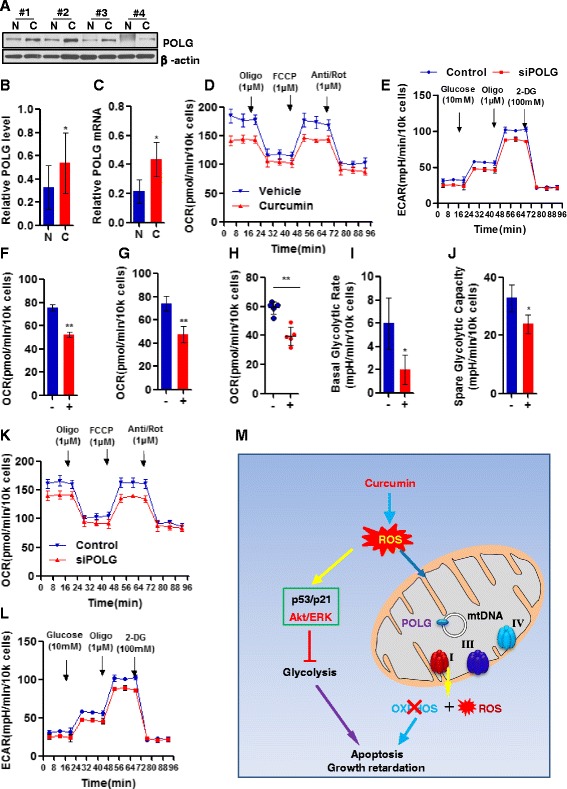Fig. 5.

POLG expression in gastric tumors of human subjects and effects of curcumin on the cellular bioenergetics. Gastric cancer (C)and surrounding normal tissues (N) were isolated from human subjects diagnosed with gastric cancer and evaluated for expression of POLG as follows: a & b. Western blot analysis, β-actin as loading control (n = 4). POLG mRNA expression (n = 4). The gastric tumor tissues samples were digested for isolation of primary gastric cancer cells for investigation on the effects of curcumin on cellular bioenergetics; d. The overall respiration as measured by OCR (mitochondrial oxygen consumption rate), n = 6; e. Aerobic glycolysis as measured by ECAR (extracellular acidification rate), n = 6; f. Basal respiration, n = 6; g. Maximal respiration, n = 6; h. ATP production; n = 6; i. Basal glycolytic rate, n = 6; and j. Spare glycolytic capacity, n = 6. The POLG in the human primary gastric cancer cells was knockdown using siRNA, and cells evaluated for: k. mitochondrial respiration as determined by real-time mitochondrial oxygen consumption rate (OCR), n = 6 and l. aerobic glycolysis as determined by extracellular acidification rate (ECAR), n = 6; arrows indicate sequential injection of respiration complex modifiers as described in Fig. 2 (Methods) m. Schematic working model of curcumin which suppresses gastric tumor cell growth via (i) enhancing excessive ROS generation and p53/p21 activation to initiate apoptosis; and (ii) depleting POLG leading to reduced mtDNA content, impaired OXPHOS, and limited energy supplement. For B-L, data are shown as mean ± SD
